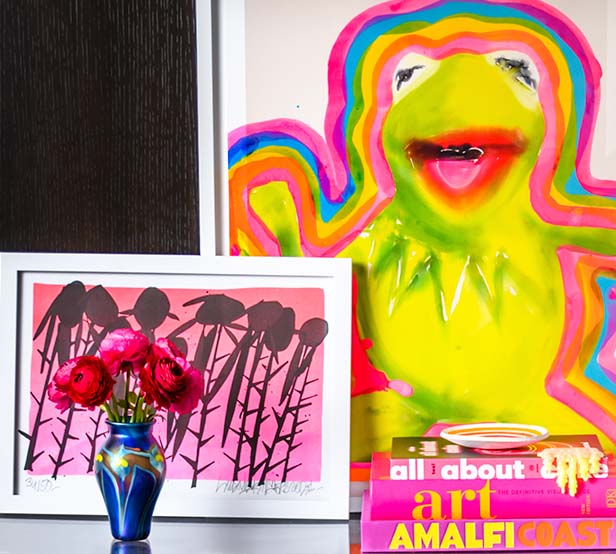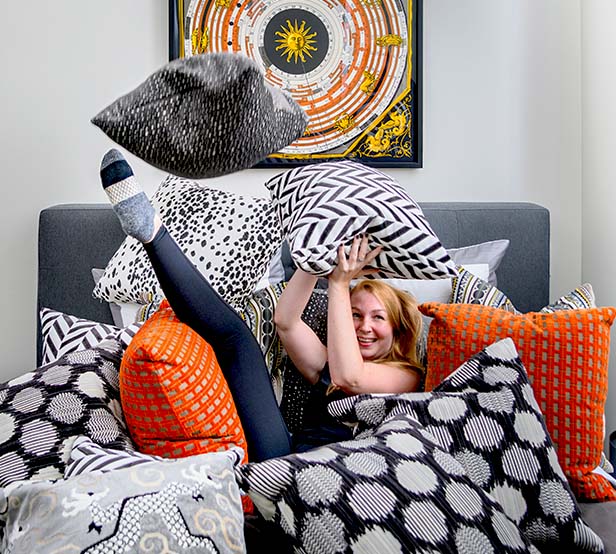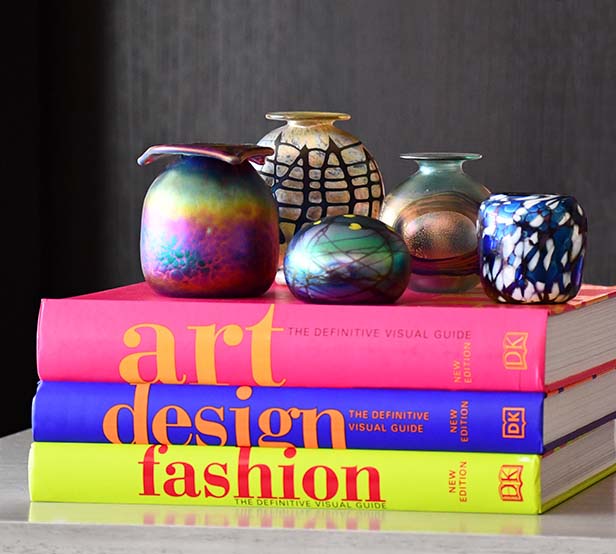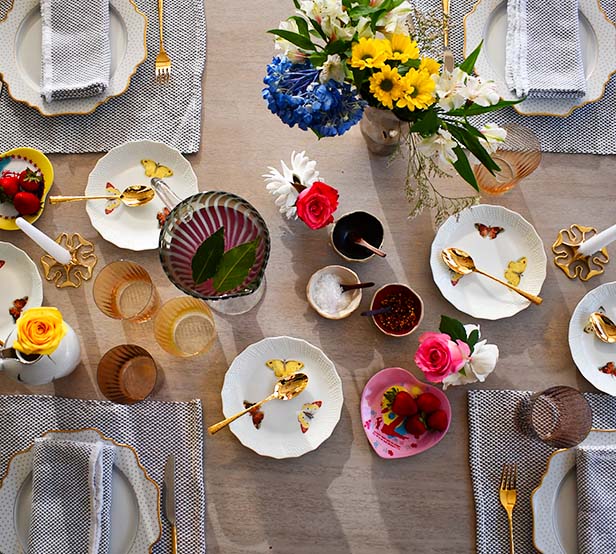
Artist Feature: Elizabeth Schafer
By: Angelica Frey
Yarns might historically have been associated with crafts, but textile sculptor and painter Elizabeth Schafer is transforming it into a pictorial high-art medium.
"I started building up this body of work about, I would say, two years ago," she told Den XYZ during a recent phone call. "I'm using this material that is "feminine" and mostly used by women for knitting and sewing."
Yet, she is not knitting or sewing anything, but using it to paint forms.

Usually, her subjects can be traced back to feminine shapes. "A lot of the times I'll find a woman and they'll just talk to me in some sort of way, and I'll just get a feeling that I want them to be in my next project."
Each process is kickstarted by a simple question: what is that the subject or the portrayed person's favorite color? "I call it their power color," she said. And while she currently sports an aurora-color mane, verging from light blue to lilac, she identifies her power color as red.
“I usually just sculpt with plaster and wood, and most of the time it’s completely abstracted,” she said. “The only time I did a cast was actually with my partner's leg. I wanted to experiment with casting so I wrapped packing tape all around her leg”. Then, the starting shape, whether it’s two or three-dimensional, is covered in yarn, usually in spiral patterns.

She landed on her medium of choice by chance. While pursuing an art major, all of the classes such as drawing, painting, and sculpting did not leave her fully satisfied. "I never felt fulfilled," she said.
The tides turned during her junior year, when her sculpture professor urged her to think outside the box: she used to make her own jewelry, mostly with yarn. So, the professor asked, why not use yarn for sculptures?
"I was like, no, because it's seen as crafty, and I don't want to be crafty," she told DenXYZ. Still, she tried throwing yarn around and experimenting, and during one of those experiments, she noticed that creating spiral-like patterns would always just come together and yield a seamless look. Plus, it’s highly meditative. "I just get into a massive zone. And as soon as I'm done I have this massive feeling of fulfillment," she said.

Her process starts with laying glue down on the canvas. "I just make sure that I have a very good surface, because so far I've used wood plaster, raw canvas material: that really soaks up the glue, so it's really sturdy," she said. Spiral patterns with yarn follow suit, and, in case of mistakes, the glue of her choice is easily dissolved with water.

She favors acrylic yarn over wool or cotton. "You have more freedom with it: [for example] one of the artworks I made is called Sarah, and it depicts an upside down head of a curly woman. I found out that you can curl yarn, but it needs to be acrylic."
While she likes using paint on yarn, especially to create subtle reliefs, she prefers buying previously colored yarn. "If it's a ball that's mixed with many different colors, I'll unravel the entire ball, and then slice up the colors that I want specifically, and then put them next to each other the way that I want them to," she said. "Yeah, it's a process!"
In 2021, she created a custom series for DenXYZ consisting of three separate pieces. Each work, measuring 16 x 16 inches, was to live in its own space but at the same time present a common thread.
The series, titled "The Butterflies," takes its inspiration from the Mirabal sisters, who stood up against the repressive regime of the Dominican Republic, opposing the dictatorship of Rafael Trujillo, only to end up assassinated on November 25, 1960.
One, Minerva, comes in a fuchsia-to-orange color palette, another, Maria Teresa, has teals and emerald greens, and another, Patria, is in greyscale.
"I did research on each of them individually, and I found out that these specific colors for each canvas matched them individually and all of them together at the same time, so I thought it worked out perfectly," said Schafer. "I just love that yes, they're their own works, but at the same time, they all work together."
Of course, Schafer is far from being done experimenting. "But," she said. "I've found that the material that brings everything together is always yarn."
By Angelica Frey: Angelica Frey’s aesthetic combines classicizes decadence with maximalist prints and a bold color palette. For the time being, though, her Brooklyn apartment is mostly white with yellow, turquoise, and pink accents. You can read her work in New York Magazine, The Guardian, WSJ, and ArtNews. She’s always looking for more designers and creatives to talk to @angelica_frey_writes





